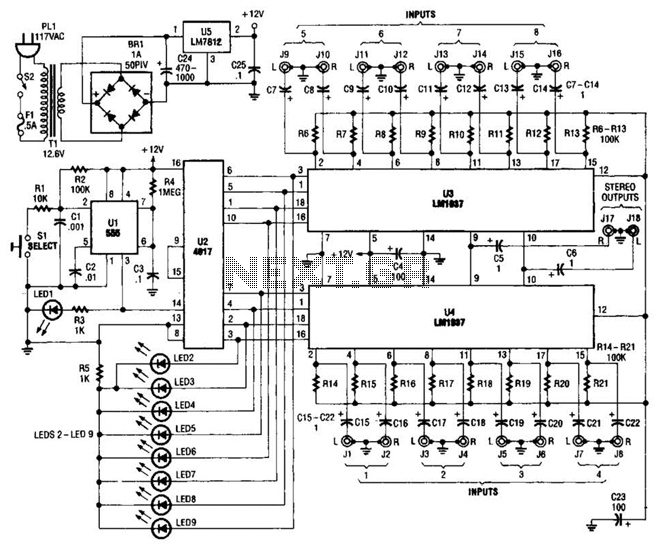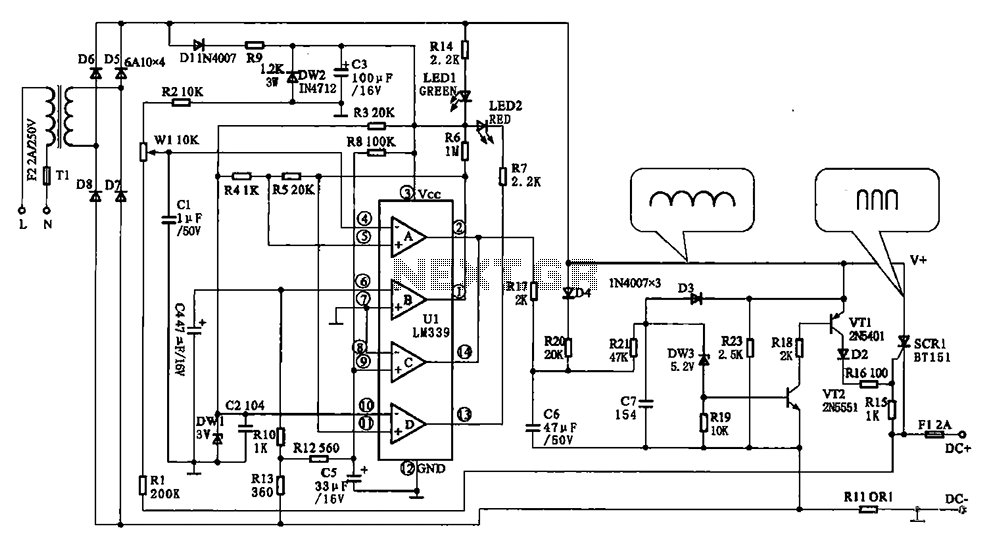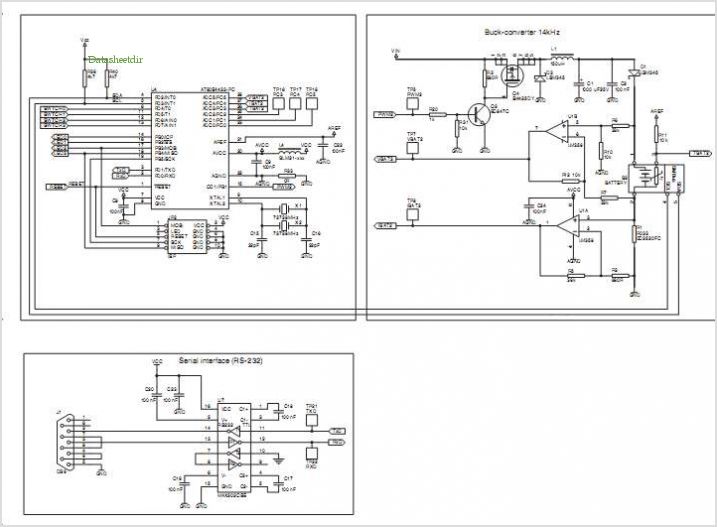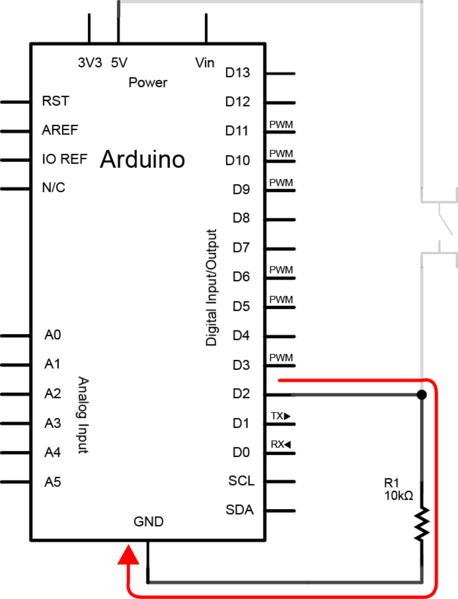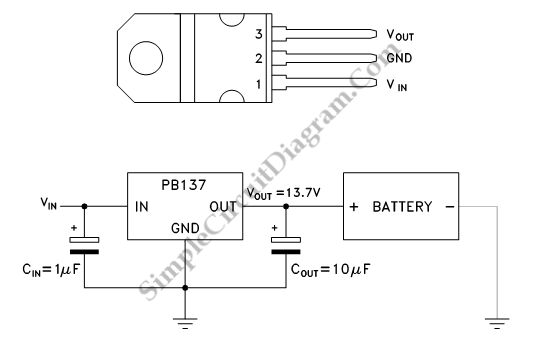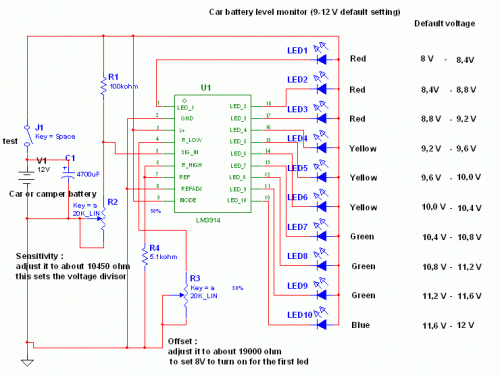
Battery powered Pi and servo switch
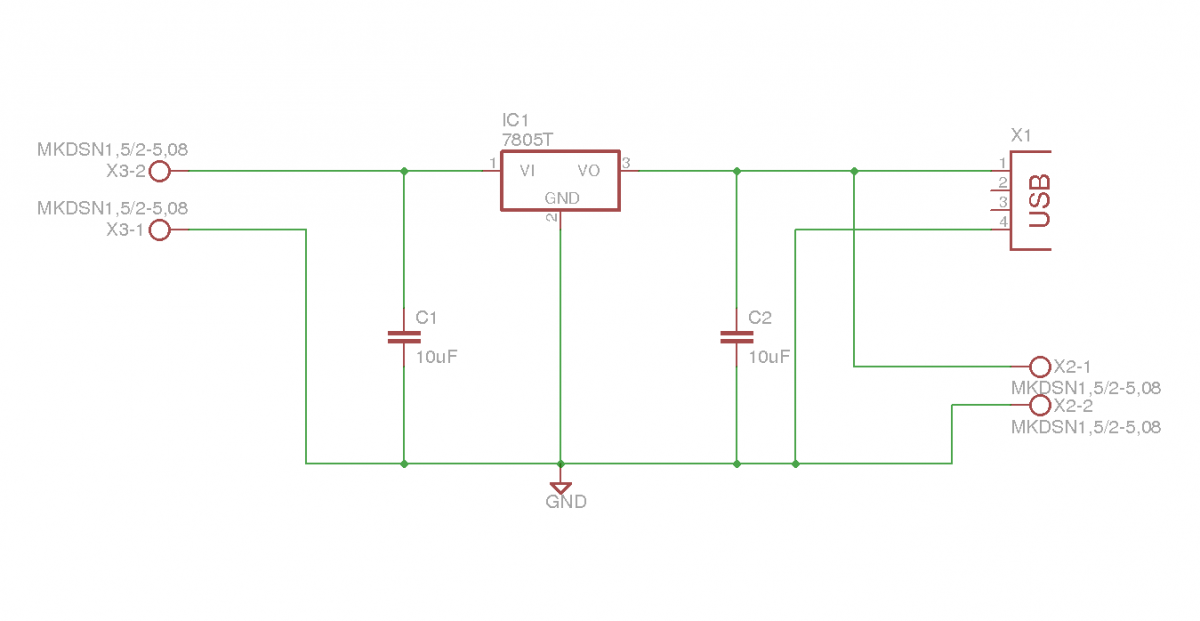
This document outlines the details of several circuits designed and built for a robot. The first circuit is a voltage regulator intended to supply power to a Raspberry Pi from a 7.2V battery. While the circuit is relatively simple, it incorporates features that enhance usability for powering the Raspberry Pi.
The voltage regulator circuit for the Raspberry Pi is designed to convert the 7.2V from the battery to a stable 5V output, which is the required operating voltage for the Raspberry Pi. The circuit typically utilizes a linear voltage regulator, such as the LM7805, which is capable of providing a maximum output current of 1A.
The circuit configuration includes input and output capacitors to ensure stability and reduce voltage spikes. A capacitor with a value of 0.33 µF is placed at the input of the regulator to filter any high-frequency noise from the battery supply, while a 0.1 µF capacitor is placed at the output to maintain stability under varying load conditions.
Additionally, to enhance the circuit's performance, a heat sink may be attached to the voltage regulator to dissipate excess heat generated during operation, especially when the input voltage is significantly higher than the output voltage. This is crucial to prevent thermal shutdown, which can occur if the regulator overheats.
To facilitate easy connection to the Raspberry Pi, the output of the regulator can be connected to the 5V and GND pins of the Raspberry Pi GPIO header. The circuit can also be equipped with an LED indicator to show when the regulator is powered and functioning correctly.
Overall, this voltage regulator circuit is a practical solution for powering a Raspberry Pi from a higher voltage battery source, ensuring stable operation while integrating user-friendly features.This post will outline the details of a couple of circuits I designed and built for my robot. The first is a regulator to supply my Raspberry Pi with power from a 7.2V battery. Although a simple circuit, it has some features that make it very easy to use to power the pi. 🔗 External reference
The voltage regulator circuit for the Raspberry Pi is designed to convert the 7.2V from the battery to a stable 5V output, which is the required operating voltage for the Raspberry Pi. The circuit typically utilizes a linear voltage regulator, such as the LM7805, which is capable of providing a maximum output current of 1A.
The circuit configuration includes input and output capacitors to ensure stability and reduce voltage spikes. A capacitor with a value of 0.33 µF is placed at the input of the regulator to filter any high-frequency noise from the battery supply, while a 0.1 µF capacitor is placed at the output to maintain stability under varying load conditions.
Additionally, to enhance the circuit's performance, a heat sink may be attached to the voltage regulator to dissipate excess heat generated during operation, especially when the input voltage is significantly higher than the output voltage. This is crucial to prevent thermal shutdown, which can occur if the regulator overheats.
To facilitate easy connection to the Raspberry Pi, the output of the regulator can be connected to the 5V and GND pins of the Raspberry Pi GPIO header. The circuit can also be equipped with an LED indicator to show when the regulator is powered and functioning correctly.
Overall, this voltage regulator circuit is a practical solution for powering a Raspberry Pi from a higher voltage battery source, ensuring stable operation while integrating user-friendly features.This post will outline the details of a couple of circuits I designed and built for my robot. The first is a regulator to supply my Raspberry Pi with power from a 7.2V battery. Although a simple circuit, it has some features that make it very easy to use to power the pi. 🔗 External reference
